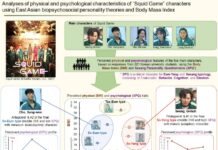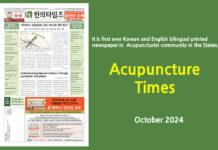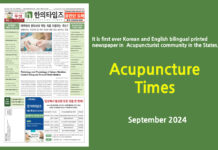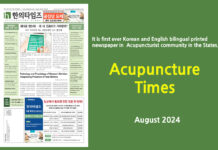Acupuncture regulates the immune system, relieving pain and inflammation.
By David Lee, L.Ac.
Sarah W., aged 30, dedicated her days to shaping young minds as an elementary school teacher. However, beneath her outward strength lay a battle with Lupus Erythematosus, an autoimmune disorder that had plagued her for eight long years. This relentless condition saw her body turn against itself, targeting her joints, skin, kidneys, blood cells, heart, and lungs. She endured ceaseless inflammation, marked by painful joints, fiery rashes, and incessant itching, leaving her hands visibly swollen.
Sarah also grappled with debilitating migraines for a decade. These vicious headaches struck with an intensity that radiated from the back of her skull, accompanied by a relentless throbbing on one side. At their worst, they wrung from her an average of three episodes of vomiting per month. And over the past year, their grip had tightened, refusing to relinquish its hold.
Sarah also battled chronic insomnia. Each day brought with it the discomfort of abdominal bloating, particularly pronounced after meals. And as if her physical woes weren’t enough, she found no solace in the antidepressant Lexapro, which she had begun taking four weeks prior.
Yet amidst this storm, a ray of hope emerged in the form of Bisoma Acupuncture. During her initial sessions, a combination of acupuncture points from the Metal-Order—LI1 (Metal), UB66 (Water), GB41 (Wood), SI5 (Fire), and ST36 (Earth)—brought about a remarkable shift. Her once sky-high resting heart rate plummeted from 134 to 94, a tangible testament to the treatment’s efficacy.
However, the presence of persistently damp palms prompted a shift to the Wood-Order, comprising GB44 (Wood), SI2 (Fire), ST43 (Earth), LI5 (Metal), and UB40 (Water). This change heralded a promising sign, as the drying of her palms and feet hinted at a deeper level of balance achieved through the acupuncture points.
Continued treatments twice a week reduced the intensity, frequency, and duration of her joint pain, insomnia, headaches, fatigue, and bloating. Her resting heart rate continued its downward trajectory, reaching 65 beats per minute.
Her diagnosis as a Soeumin II, with characteristics of Taeeumin, provided a framework for targeted intervention in line with Korean Sasang Constitutional Medicine. However, the underlying principle—that individuals possess distinct constitutional types—resonates across diverse medical traditions. Whether termed Lesser Yin + Greater Yin, Kapha in Indian Ayurveda, or Melancholic in Greco-Roman medicine, the recognition of these fundamental constitutions underscores the rich tapestry of global medical wisdom. Furthermore, this constitution is also a Melancholic in Unani, Conscientious in Social Styles, and ESFJ in Myers-Briggs Type Indicator.
Sarah made dietary adjustments tailored to her physiological needs, resulting in a notable reduction in abdominal bloating. By reducing harmful food ingredients such as dairy, gluten, shellfish, lettuce, and cabbage, her system functioned optimally on its path to health and vitality.
With the integration of Tetrasoma Acupuncture, targeting Earth points such as GB41, UB65, LI3, and SI3, Sarah experienced a further leap forward in her journey towards wellness.
By her 13th visit, the need for Vitamin B injections had dissipated. Since her 16th visit, Sarah has transitioned to maintenance treatment once a week, with her symptoms minor with this regimen.
Sarah’s progress stands as a testament to the transformative power of holistic care, guided by an understanding of her unique constitutional makeup and a commitment to tailored interventions that nurture her body’s innate capacity for healing.

































